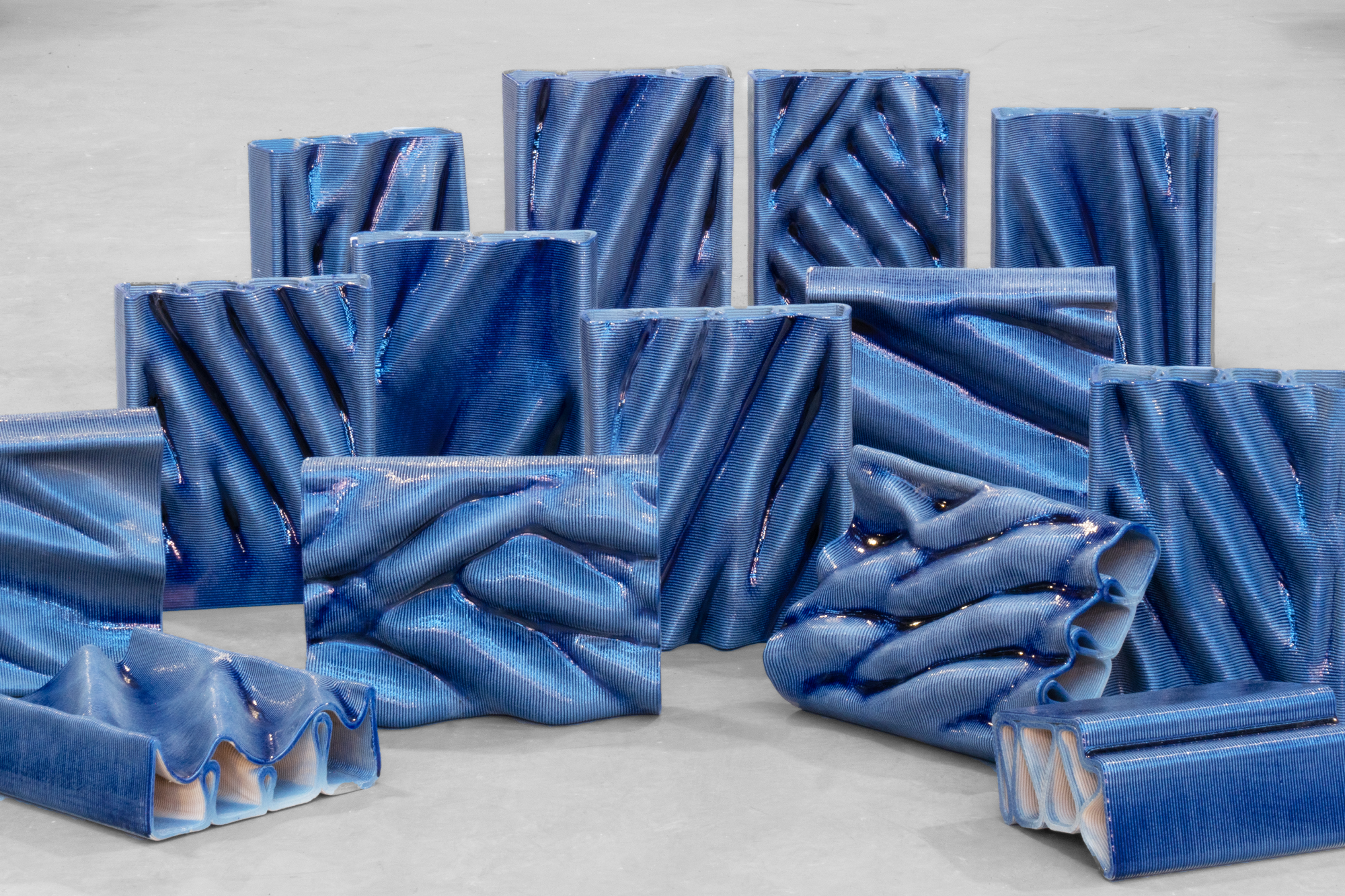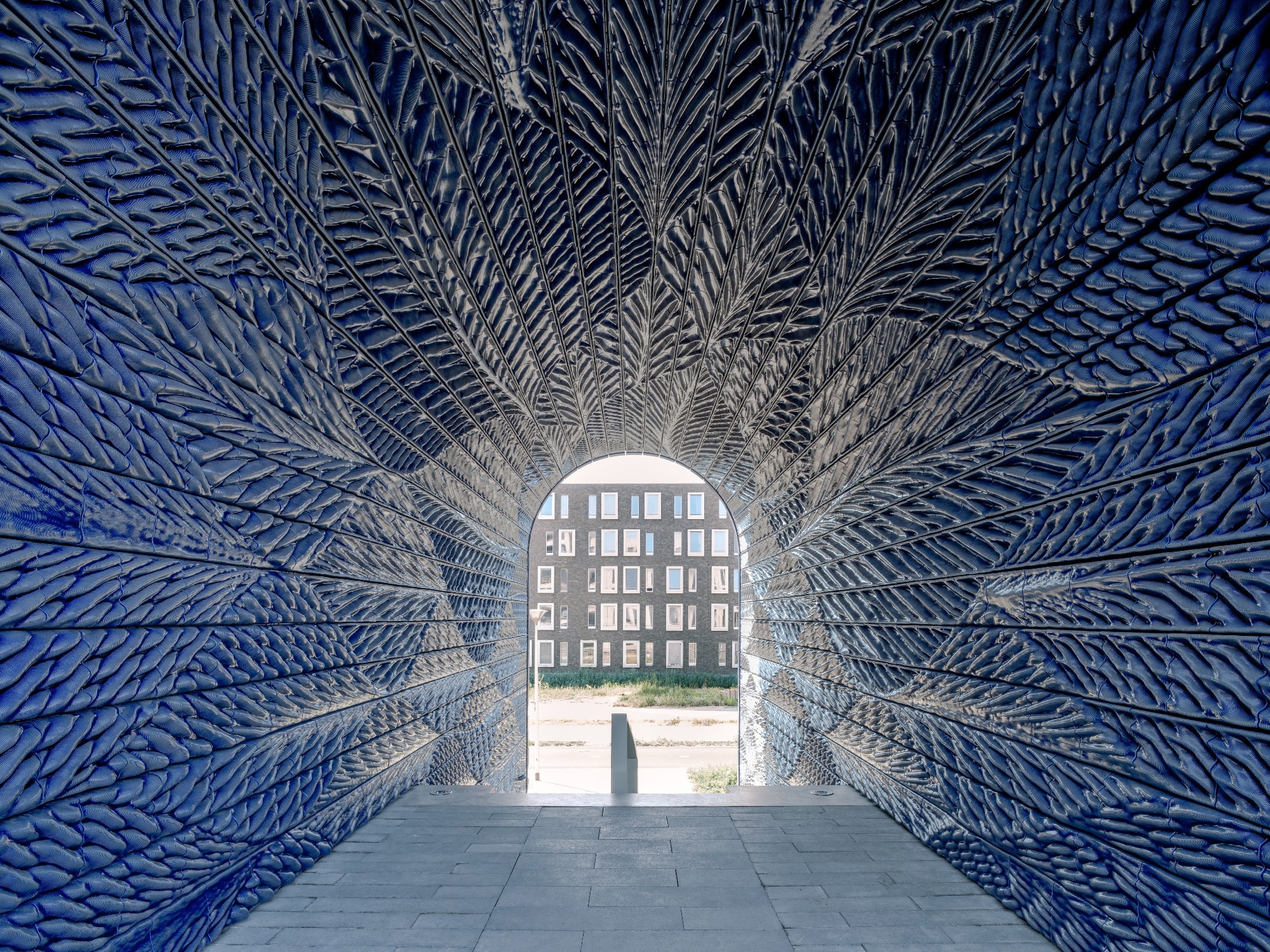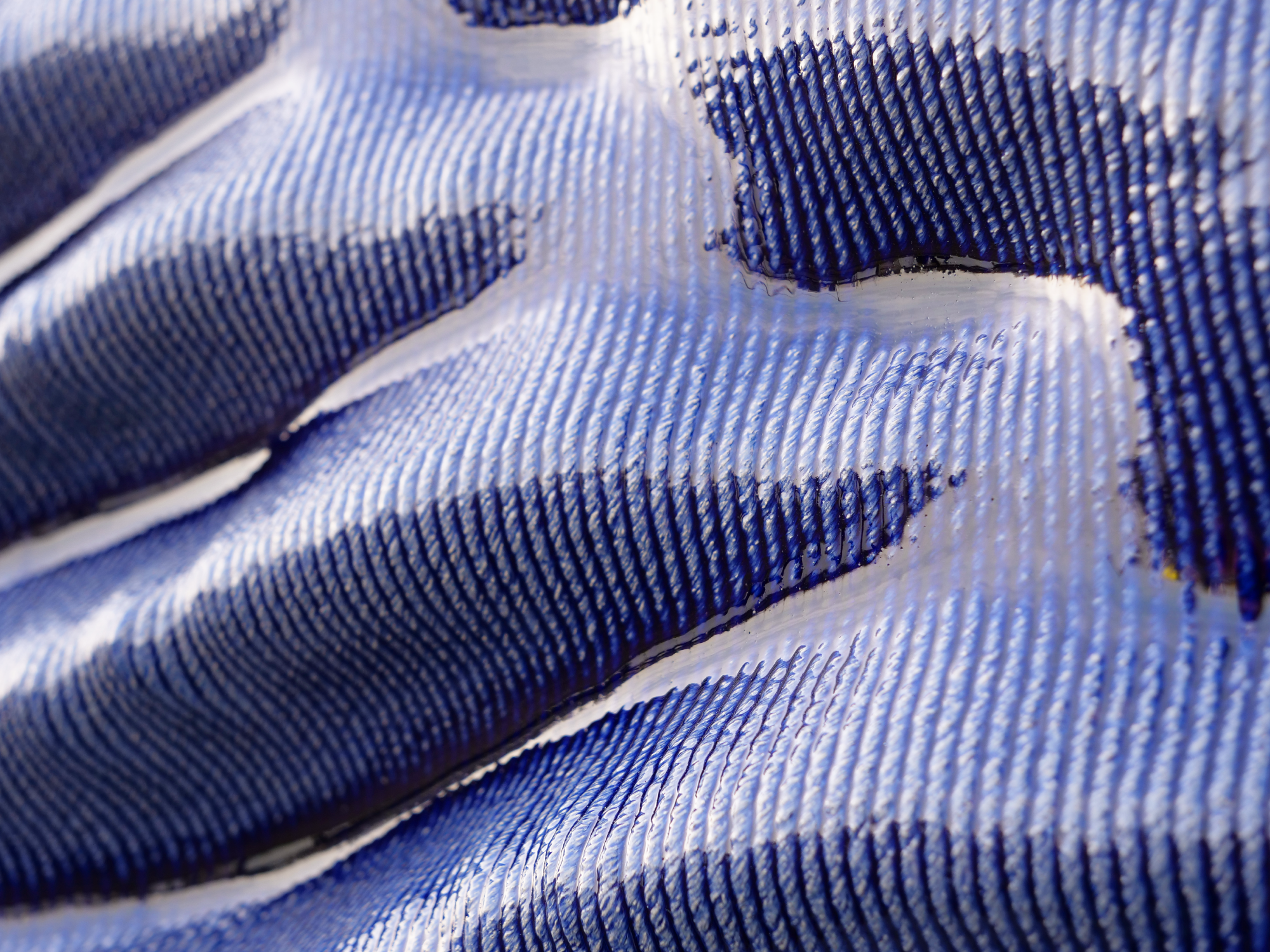3D printing is becoming a ubiquitous technology in fields such as construction and manufacturing. The technology allows for the freeform design of multiple building elements, combining innovation and aesthetic design in new ways. Now, Dutch architecture practice Studio RAP has combined 3D printing with algorithmic design to create a stunning pair of arches inspired by Delft Blue Porcelain. The arches have been installed at the PoortMeesters residential complex in the Netherlands and have been named “New Delft Blue.”

Image Credit: Studio RAP
New Delft Blue
Delftware is one of the most recognizable forms of European pottery, originating in the Dutch city of Delft in the early 16th century. Originally, a thin tin glaze was applied to low-fired earthenware objects such as vases and plates, which were then painted with a blue or polychrome design.

Image Credit: Studio RAP
Inspired by the history of this important piece of cultural history, Studio RAP is showcasing the potential of additive manufacturing (3D printing) for the built environment through the New Delft project. The installed archways consist of 3,000 unique 3D-printed tiles designed by a proprietary algorithm.
"The project embodies the unique identity of Delft in a contemporary way, by referring to its history," said Studio RAP.
It's algorithmically designed, nature-inspired patterns in blue refer to Delft of today as the city of knowledge by using cutting-edge design and 3D-printing technology.
Studio RAP
The tiles produced by Studio RAP for the project measure around 30 x 40cm and colored with a transparent blue glaze. Algorithmically generated leaf patterns create a sense of organic flow, guiding people over the staircases. The archways themselves are eight meters high, four meters wide, and twelve meters deep.
"We strived to design a pattern that's not too figurative and not to abstract, this field of tension makes the design to our opinion more timeless," said Lucas ter Hall, co-founder of Studio RAP.
"All tiles are unique, all leaves are unique, every time you walk through the gates, one experiences something different."

Image Credit: Studio RAP
Using Algorithms in the Design
One of the most notable features of the project was the use of algorithmic design to produce unique leaf patterns on the tiles.
A number of manufacturing constraints were taken into account in the 3D printing process, including maximum overhang and the internal support structure. The algorithm was designed in-house by Studio RAP, producing unique, organic designs for all 3,000 tiles used in the project.
Combining Traditional Design and Cutting-Edge Innovation
New Delft is just one of Studio RAP’s 3D printing projects which showcases how traditional design and technological innovation can meet and produce something utterly surprising.
High-rise de Staal is another concept from Studio RAP which uses New Delft ceramics to print a high-rise building façade. Expressive aesthetics facilitated by algorithmic-driven 3D printing results in a façade design that is highly differentiated, facilitating a contemporary urban skyline that is both retro and futuristic.
3D printed ceramics are also being used by Studio RAP for façade cladding on a boutique in Amsterdam. The building is on P.C Hoofstraat, Amsterdam’s premier luxury shopping street. 3D printing in conjunction with artisanal glazing and algorithmic design are utilized to produce a knitwork-inspired design language.
To have the possibility to 3D print ceramics in-house gives us superpowers as architects. We establish a complete digital workflow from design to realisation, maximising our design ambition and guarantee high quality architectural designs.
We gain more control over the final design, time planning and building costs, what brought us in a unique kind of 'master builder' role.
Lucas ter Hall, co-founder of Studio RAP.
The Future
The New Delft project from Studio RAP builds on the studio’s history of innovative 3D printed conceptual design, marrying the traditional with the contemporary to create an entirely new design language. By leveraging the powerful design freedom of proprietary algorithms, Studio RAP are pushing the boundaries of architecture.

Image Credit: Studio RAP
"With every project we design, we strive to make the world more exciting and diverse," said Ter Hall. "New Delft Blue is such statement to enrich the world with a new architectural language, one that breaks barriers by innovating the way the world is envisioned, built, and experienced."
"New Delft Blue gives the building a unique identity and we hope that the residents will embrace it."
References and Further Reading
Ravenscroft, T (2023) New Delft Blue archways wrapped in 3,000 unique 3D-printed ceramics tiles [online] Dezeen.com. Available at:
https://www.dezeen.com/2023/06/29/new-delft-blue-3d-printed-ceramic-archway-studio-rap/
Sher, D (2020) Studio RAP 3D prints 2,850 ceramic tiles for stunning New Delft Blue construction project [online] voxelmatters.com. Available at:
https://www.voxelmatters.com/studio-rap-3d-prints-4000-ceramic-tiles-for-stunning-new-delft-blue-construction-project/
Studio RAP (website) New Delft Blue [online] Available at:
https://studiorap.nl/New-Delft-Blue
Studio RAP (website) Ceramic House
https://studiorap.nl/Ceramic-Hous
Disclaimer: The views expressed here are those of the author expressed in their private capacity and do not necessarily represent the views of AZoM.com Limited T/A AZoNetwork the owner and operator of this website. This disclaimer forms part of the Terms and conditions of use of this website.